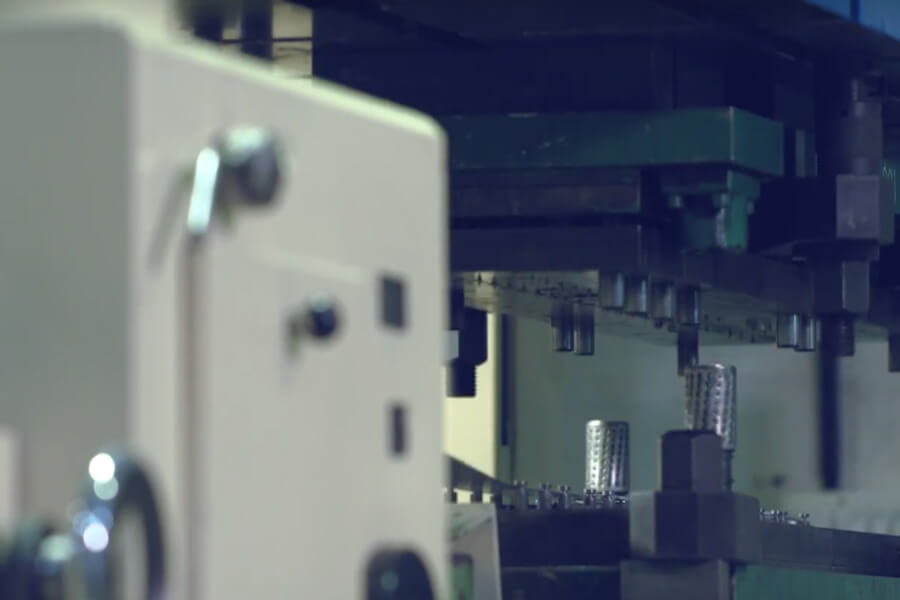Unilateral burrs are one of the common problems that metal stamping suppliers and manufacturers face. These are unwanted features that creep in the metal stampe parts, even when the metal stamper use high-end advance metal stamping tools and equipment.
In this article, we discuss what are unilateral burrs, what causes them, and why deburring is important.
What are Unilateral Burrs in Stamping Parts?
Unilateral burrs are the excess metal that sticks out from the metal corner or the extra metal shavings that are usually produced at the machined edges of the metal stamping parts supplier. These leave metal bumps on the metal part and affect the aesthetics of the product and also its functionality.
Overlooking the deburring operation during the developing or quoting process can cost metal stamping suppliers and manufacturers a hefty amount. This is because some types of burrs require costly deburring methods. Not only this, leaving unilateral burrs unattended could lead to poor product quality.
What Causes Unilateral Burr in Stamping Parts?
Customized precision metal stamping suppliers of copper, brass, or steel need to be careful about unilateral burrs before delivering the products to their clients. Knowing the causes of the same could help to avoid it and reduce the risk of poor quality products.
Here are some of the most common causes for unilateral burr in stamping parts:
First, the blade is blunt. Burrs can result from dull cutting edges or stings. The factors affecting the dulling of the cutting edge are:
Dulling of the Cutting Edge:
One of the reasons for unilateral burrs is the dulling of the cutting edges. It occurs due to various reasons like:
- Poor surface treatment of convex and concave mold material
- The poor wear resistance of the convex and concave mold material
- Stings due to poor die structure and rigidity.
- Lack of lubrication of the dies.
- Lack of sharpened cutting edges.
Mold assembly error
Mold assembly error occurs when the punch and fix plate are not aligned properly. Ideally, both should be perpendicular to each other and held tight. Sometimes due to wear, the assembly positioning pin becomes loose, altering the fixing position of the convex and concave molds.
Poor Steering Accuracy
Poor steering accuracy occurs due to a wider-than-required mold guide. It alters the position of the centerline such that the upper and lower molds fail to coincide. Ultimately, this affects the uniformity of the punching gap.
Error During Installation Error
In cases where non-guide molds are installe, the chances of getting an uneven punching gap are most. It increases the chances of misalignment of upper and lower molds. Also, overlooking the cleanliness of mold or tightness of the mold screws can result in tilting the overall working portion, increasing the chances of unilateral burrs.
Improper Selection of Metal
In some rare cases, the metal chosen might cause unilateral burrs. If the material is out of tolerance, the punch gap can get widen and cause the metal part to create burrs.
Why is Deburring Important?
Unilateral burrs are unavoidable. Even with the best precision metal stamping tools, metal stamping suppliers need to invest in a secondary operation to remove burrs- called deburring. Some common deburring tools and methods are:
- Die Deburring – Punches are made to remove the burrs
- Manual Deburring – Manual removal of burrs through files, sandpaper, grinding heads, and other tools.
- Water-jet Deburring – High pressure water is sprayed on the metal part to remove the burrs.
- Frozen Deburring – The metal is frozen to make the burr brittle and easy to break.
- Hot Deburring – Thermal blasting is use to remove the burrs
Deburring is Important Because the Burrs if Untreated Could Cause
- Serious cuts and abrasions during handling of the metal part
- Risk of low functionality of the part
- Unwanted alteration to the surface aesthetics
Deburring Also Helps in Removing
- Discoloration caused by brazing and welding.
- Unwanted contaminants, rust, oxidation, or scale from heat treatment.
Conclusion
Metal stamping supplies and manufacturers cannot ignore the impact of burrs on the quality of the metal-stamped parts. Therefore, it is imperative to maintain good cleanliness, sharpening of cutting tools, and carry out regular health checkups of the die tools and machines to ensure all the screws are tight and the molds are in their original place.
For more blogs click here.




